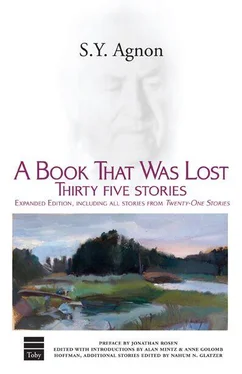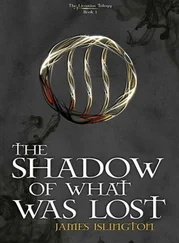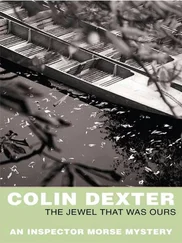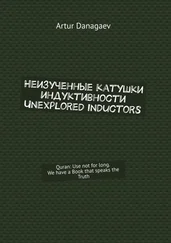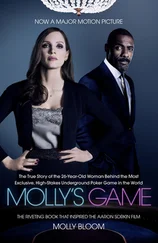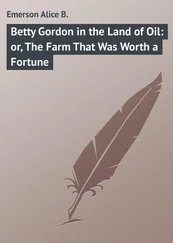S. Agnon - A Book that Was Lost
Здесь есть возможность читать онлайн «S. Agnon - A Book that Was Lost» весь текст электронной книги совершенно бесплатно (целиком полную версию без сокращений). В некоторых случаях можно слушать аудио, скачать через торрент в формате fb2 и присутствует краткое содержание. Издательство: Toby Press Ltd, Жанр: Современная проза, на английском языке. Описание произведения, (предисловие) а так же отзывы посетителей доступны на портале библиотеки ЛибКат.
- Название:A Book that Was Lost
- Автор:
- Издательство:Toby Press Ltd
- Жанр:
- Год:неизвестен
- ISBN:нет данных
- Рейтинг книги:3 / 5. Голосов: 1
-
Избранное:Добавить в избранное
- Отзывы:
-
Ваша оценка:
- 60
- 1
- 2
- 3
- 4
- 5
A Book that Was Lost: краткое содержание, описание и аннотация
Предлагаем к чтению аннотацию, описание, краткое содержание или предисловие (зависит от того, что написал сам автор книги «A Book that Was Lost»). Если вы не нашли необходимую информацию о книге — напишите в комментариях, мы постараемся отыскать её.
A Book that Was Lost — читать онлайн бесплатно полную книгу (весь текст) целиком
Ниже представлен текст книги, разбитый по страницам. Система сохранения места последней прочитанной страницы, позволяет с удобством читать онлайн бесплатно книгу «A Book that Was Lost», без необходимости каждый раз заново искать на чём Вы остановились. Поставьте закладку, и сможете в любой момент перейти на страницу, на которой закончили чтение.
Интервал:
Закладка:
Buczacz: The Epic Life of One Town
~ ~ ~
During the last decade of his life, Agnon was busy compiling a volume of stories about his hometown Buczacz which was published after his death under the title The City and the Fullness Thereof ( Ir Umeloah ). Agnon combined stories of various genres that he had published previously with new stories written for the volume. He then took these heterogeneous narratives and arranged them like brilliant pieces of mosaic tiles to create a whole that was greater than its parts: nothing less than an epic portrait of one Jewish town in eastern Europe.
The creation of this volume tells us something very important about Agnon’s relationship to modern Jewish history. Because Agnon is the great Hebrew writer of European Jewry, one is surprised by how little his work directly engages the destruction of European Jewry in the Holocaust. To be sure, there are a limited number of stories that deal with the Holocaust (three are included in this collection: “The Lady and the Peddler,” “The Sign,” and “At the Outset of the Day”). Agnon’s great novel A Guest for the Night , which anatomizes the devastating effects of World War i on Galician Jewry, and was published on the eve of World War ii, might be thought of as the writer’s statement on the destruction of Jewish life. Yet his reticence on the Holocaust itself remains perplexing.
Buczacz: The Epic Life of One Town
The fashioning of The City and the Fullness Thereof provides something of an answer. Instead of undertaking to represent the atrocity of the Holocaust, with all the ethical and aesthetic dangers inherent in the depiction of evil, Agnon chose another path. He spent the last years of his life mounting a coherent imaginative evocation of the lost world of East European Jewry as represented by Buczacz. He chose, in a sense, the representation of life over death. He reasoned, one supposes, that it was a greater calling — and perhaps a better use of his own gifts as a writer — to summon up the fullness of the culture that was lost than to document the throes of its heartbreaking annihilation.
Despite their memorializing function, the stories in this volume are not fixed in a uniform gloss of nostalgia. They are as various in style and technique as the whole range of Agnon’s work, and, despite Agnon’s evident love for his hometown, the literary simulacrum of Buczacz is not spared. The three stories in this section represent this diversity.
The story “Buczacz,” which opens the collection, plays a special role in laying down the foundational myth of the town. Stories recounting the origins of great cities are no less common in Jewish literature than they are in world culture. Just as the wandering Aeneas founded Rome after the Trojan War, so too, according to legend, the great Diaspora of Spanish Jewry was begun by four shipwrecked talmudic sages from Babylonia. In the case of Galician communities such as Buczacz, the facts behind the myth are these: in the fourteenth and fifteenth centuries, Jews who had long lived in the Rhine Valley began to move east and south into Poland and the Ukraine in search of better living conditions and at the invitation of Polish landowners who valued their commercial and managerial acumen.
In the mythic mode in which “Buczacz” is told, this narrative of immigration is given a different emphasis. The motives of the Jews’ journey eastward are ennobled and presented as an expression of the millennial longing for the Land of Israel. Because this longing is unsupported by any practical preparation for the trip, the party of Jews becomes stranded in the deep snows and virgin woods of distant lands. Salvation, it turns out, comes not from above but from the protection extended by Polish landowners, who delight in the Jews’ success in developing the lands that they are colonizing. For many practical reasons, the journey to the Land of Israel is abandoned, and, with the approval of the gentile gentry, the Jews set about establishing the institutions of a permanent community, which in time becomes the center of piety and learning called Buczacz.
Harmony between the Jews of Buczacz and their rulers is the starting point of the second story, “The Tale of the Menorah.” The Chmielnicki massacres in the seventeenth century nearly destroyed the town; Buczacz was gradually rebuilt under the rule of the kingdom of Poland until Poland was partitioned at the end of the eighteenth century. The new rulers were the Austro-Hungarians, who held sway until World War i. The changing relations between the Jewish community of Buczacz and its temporal rulers are traced in this story through the fortunes of a candelabrum, a menorah, given to the community as a token of gratitude by an early monarch.
The menorah is altered, lost, found, smashed, rebuilt, and lost and found again in a way that mirrors the vicissitudes of the Jewish-gentile political connection. The intertwined nature of this relationship is represented by the changes the Jews of Buczacz make in the menorah, which stands in the synagogue recalling the Jerusalem Temple of antiquity. When the town is ruled by Poland, the national insignia, a white eagle, is patriotically placed in the center of the menorah. When Austria takes over, the Polish eagle is publicly smashed and the two-headed Austrian eagle ceremoniously established in its stead.
The story concludes with the pious observation: “One kingdom comes and another kingdom passes away. But Israel remains forever.” The people Israel, like the menorah, endures, however battered and decimated. Yet, the story implies through its believing chronicler, the source of this endurance is not the politics of accommodation but trust in God, “whom alone we desired.”
“Pisces” illuminates a different aspect of the Buczacz myth. Written late in Agnon’s life (1956), “Pisces” is ambitious both in its proportions — somewhere between a short story and a novella — and in its thematic horizon. It is less an account of Buczacz than a statement about the human enterprise as a whole. The story is also a wonderful repository of many of the features that make Agnon’s writing distinctive: the stance of the detached storyteller-chronicler, the serious playfulness with learned sources, the frequent digressions, and the antic intermixing of the sacred and the profane.
Buczacz: The Epic Life of One Town
The grotesque quality of the story, as analyzed in illuminating studies by Gershon Shaked, results from the mixed feelings of amusement and anxiety that are aroused when the distinctions between animals and human beings are blurred. “Pisces” narrates the parallel lives of Fishl Karp, a famous Buczacz glutton, and an enormous fish, which Fishl buys from a gentile fisherman and proposes to make into a feast. The two occupy positions of dominance in their respective domains. Fishl is a coarse moneylender of enormous appetites who flouts communal edicts (the Jews are boycotting fish to combat price gouging) and who uses Jewish law to justify his gluttony. For its part, the fish is a lordly denizen of the oceans whose hubris leads it to explore the lesser rivers, including Buczacz’s modest Strypa, where it is snared. The nobility of the fish’s mien and the vast freedom of its movements contrast sharply with Fishl’s venality and his self-satisfied rationalizations. Yet because of the supposed superiority of man over beast, it is the netted fish, quivering in its death throes, that is taken possession of by the hungry Fishl.
The desired repast never takes place. Fishl is separated from the object of his desire and, like the fish, soon ends up in the grave. The story wastes no opportunity to underscore the fishlike qualities of human beings and the human qualities of the fish. The latter are evident in the very personification of the fish and the pathos of its ordeal. The former are evident in the fish-derived names of the characters and the vast number of intertextual references to fish taken from the Bible and the Talmud. The most grotesque linkage concerns Fishl’s tefillin. Tefillin (singular: tefillah) are small black boxes containing scriptural passages held in place on the forearm and head by leather straps which are worn by adult males in prayer. In his haste to despatch both his morning prayers and the fish, the head tefillah becomes separated from the arm tefillah; one ends up on Fishl’s arm and the other, in an act of hilarious sacrilege, on the head of the fish. Thus man’s capacity for spiritual consciousness, which marks him off from the animals and which is ritually symbolized by the tefillin, is decisively effaced.
Читать дальшеИнтервал:
Закладка:
Похожие книги на «A Book that Was Lost»
Представляем Вашему вниманию похожие книги на «A Book that Was Lost» списком для выбора. Мы отобрали схожую по названию и смыслу литературу в надежде предоставить читателям больше вариантов отыскать новые, интересные, ещё непрочитанные произведения.
Обсуждение, отзывы о книге «A Book that Was Lost» и просто собственные мнения читателей. Оставьте ваши комментарии, напишите, что Вы думаете о произведении, его смысле или главных героях. Укажите что конкретно понравилось, а что нет, и почему Вы так считаете.
